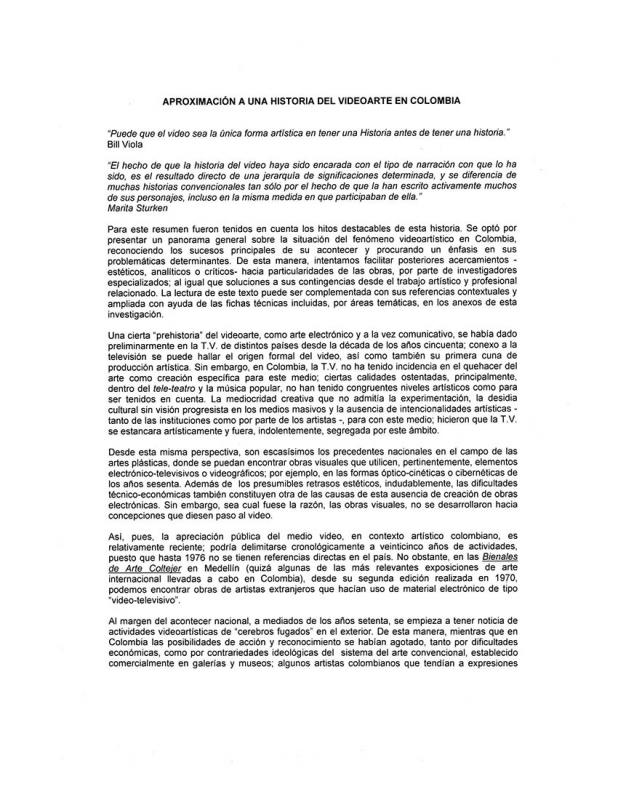“El Video” [The Video], written in 1981, should be considered both a pedagogical essay and a manifesto. It seeks to explain and describe the nature of video (see: “Aproximación a una historia del videoarte en Colombia” [A Brief History of Video Art in Colombia], doc. # 1130869) by citing its sociological relationship with the public. From this perspective, the article should be understood as an expression of an entire era, a way of seeing the world in which Marxism and capitalism collide. Acha discusses the relationship between television as the cause and effect of profound social changes and the anti-institutional aspect of video considering its simultaneous role as language, medium, and reference.
Juan Acha (1916-1995) earned a reputation as a noted art critic and theoretician in Latin America in the late 1950s. In 1971 he moved to Mexico, where he spent the rest of his life. His most important publications include: Art in Latin American Today, (1961); Arte y Sociedad en Latinoamérica [Art and Society in Latin America] (México, DF: Fondo de Cultura Económica, 1979); Ensayos y Ponencias Latinoamericanistas [Latin Americanist Essays and Lectures] (Caracas: Galería de Arte Nacional, 1984); Las culturas estéticas de América Latina [The Aesthetic Cultures of Latin America] (México, DF: Universidad Nacional Autónoma de México, 1994).
Video art is said to have begun with the South Korean artist Nam June Paik’s 1965 film of Pope Paul VI, so a look at this article’s publication date (1981—sixteen years later) underscores the urgent need to publish essays of this nature in technical magazines.

